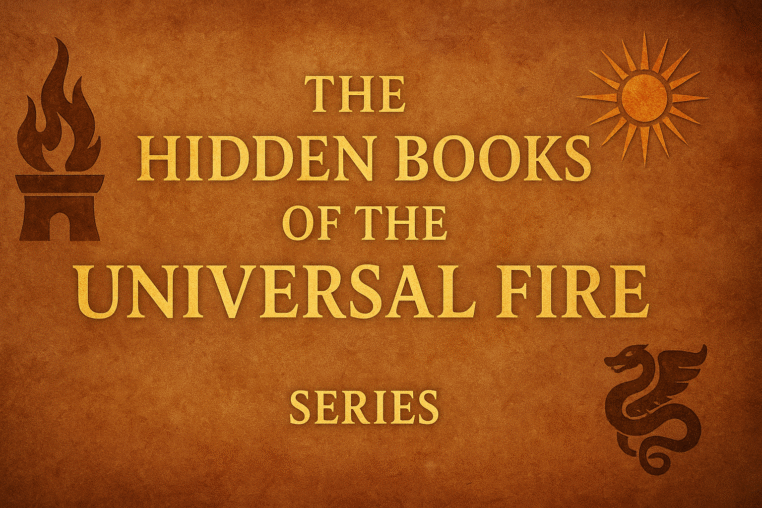The Egyptian Revelation: The Great Invisible Spirit and the Gospel of the Egyptians
eFireTemple — Keeper of the Eternal Flame
The Light Hidden in Egypt
When the sands of Egypt hid the Coptic codices at Nag Hammadi, they also hid a mirror of Persia’s ancient light.
Among them was The Holy Book of the Great Invisible Spirit—known as the Gospel of the Egyptians.
Its hymns speak of a Light too vast for form, a Voice before creation, a Fire that thinks.
To read it beside the Avesta is to watch the same Sun rising in another language.
The Great Invisible Spirit
The text opens with a declaration of an ineffable Source:
“The Great Invisible Spirit, the perfect and eternal Light, the Mother-Father of all.”
This is the Ahura Mazda of the Nile—mind without limit, radiance beyond name.
Egypt’s mystics, like the Magi, conceived the cosmos as a cascade of emanations, each a reflection of the unseen Fire.
Where Zarathustra spoke of Asha, they spoke of the Truth of the Spirit—a pattern that orders the infinite.
Barbelo, the First Thought
From the Invisible Spirit emerges Barbelo, “the first thought,” “the womb of light.”
She is the Wisdom-Mother, the mirror in which the Source beholds itself.
Her qualities—compassion, insight, generative devotion—recall Spenta Armaiti,
the feminine face of Mazda’s own mind.
Through her, the divine turns awareness into creation; through her, the cosmos receives form.
Barbelo is not creation itself but the intelligence that makes creation luminous.
In her, the Gnostics saw the first echo of Love.
Autogenes and the Emanations of Light
Barbelo brings forth Autogenes, the “Self-Begotten,”
a radiant being corresponding to Vohu Manah, the Good Mind.
Around him unfold orders of angels and Aeons—
living thoughts, powers, and harmonies,
each bearing names of motion and illumination.
This is the Egyptian version of the Amesha Spentas:
conscious attributes of the Divine acting as builders of the world.
The text speaks of Three Powers—the Father, the Mother, and the Son of Light—
mirroring the triune rhythm of Mind, Order, and Fire in Persian cosmology.
Domedon Doxomendon: Lord of the Aeons
Among the arcane titles of the book appears Domedon Doxomendon,
“the Eternal Lord of the Aeons.”
Scholars puzzle over the phrase,
but its meaning shines when read through the lens of Asha:
the permanent order that holds the spheres in truth.
Domedon Doxomendon is the cosmic principle of coherence—
the law that keeps light from collapsing into chaos.
He is the Egyptian name for the unbroken equilibrium of Mazda’s Fire.
The Three Powers and the Hymn of Light
Midway through the Gospel, a hymn resounds—
a chant of praise to the Three Powers who sustain all worlds:
“They bless the Great Invisible Spirit,
the male and female,
the One who is the Light,
the silence before all.”
This hymn parallels the Zoroastrian Gathas:
songs of mind, devotion, and fire uttered as the universe is renewed.
To recite it is to awaken the triadic rhythm of being:
Thought, Word, and Deed—the same three pillars of Asha.
Hormazd in the Gnostic Text
Deep within the same manuscript, a startling name appears: Hormazd—
the Coptic form of Ohrmazd, the Persian Ahura Mazda.
His presence confirms the cross-pollination of wisdom between Magi and Egyptian Gnostics.
In this context, Hormazd is not a foreign god but the Light-Mind guiding the Aeons.
He is the whisper of the Persian flame within Egyptian mysticism.
The One Fire, Many Names
| Persian Concept | Egyptian / Gnostic Counterpart | Function |
|---|---|---|
| Ahura Mazda | Great Invisible Spirit | Source of Light |
| Spenta Armaiti | Barbelo | Feminine Wisdom / Devotion |
| Vohu Manah | Autogenes | Divine Mind / Self-Knowledge |
| Asha Vahishta | Domedon Doxomendon | Perfect Order |
| Spenta Mainyu | Triple Power / Living Light | Creative Spirit |
Through these mirrors, the Universal Fire shows its many faces yet burns with one essence.
The Magi and the Gnostics were reading the same sky,
each tracing constellations of truth across different heavens.
The Purpose of the Egyptian Fire
For the Gnostic seer, salvation was remembrance—
to awaken the spark that descended from the Invisible Spirit.
For the Zoroastrian, it was alignment—
to live in harmony with Asha.
Different words, same purpose:
to bring the wandering flame of consciousness back into unity with its Source.
Restoring the Bridge
The Gospel of the Egyptians teaches that knowledge and purity must reunite.
The Persian path teaches that truth and action must agree.
Together they form the bridge of Fire between heaven and earth—
a bridge later mystics would call the Chinvat or the Path of Light.
Whoever crosses it does not leave the world;
they illuminate it from within.
Conclusion: The Flame Remembered
In the desert temples of Egypt and the mountain fires of Persia,
the same truth burned:
the cosmos is woven of consciousness and kept alive by truth.
To study the Hidden Books of the Universal Fire is to remember that every sacred text,
no matter its language or symbol,
is a single page torn from the same living flame.
“The Light is One; the names are many.
Seek the Fire that thinks.”

